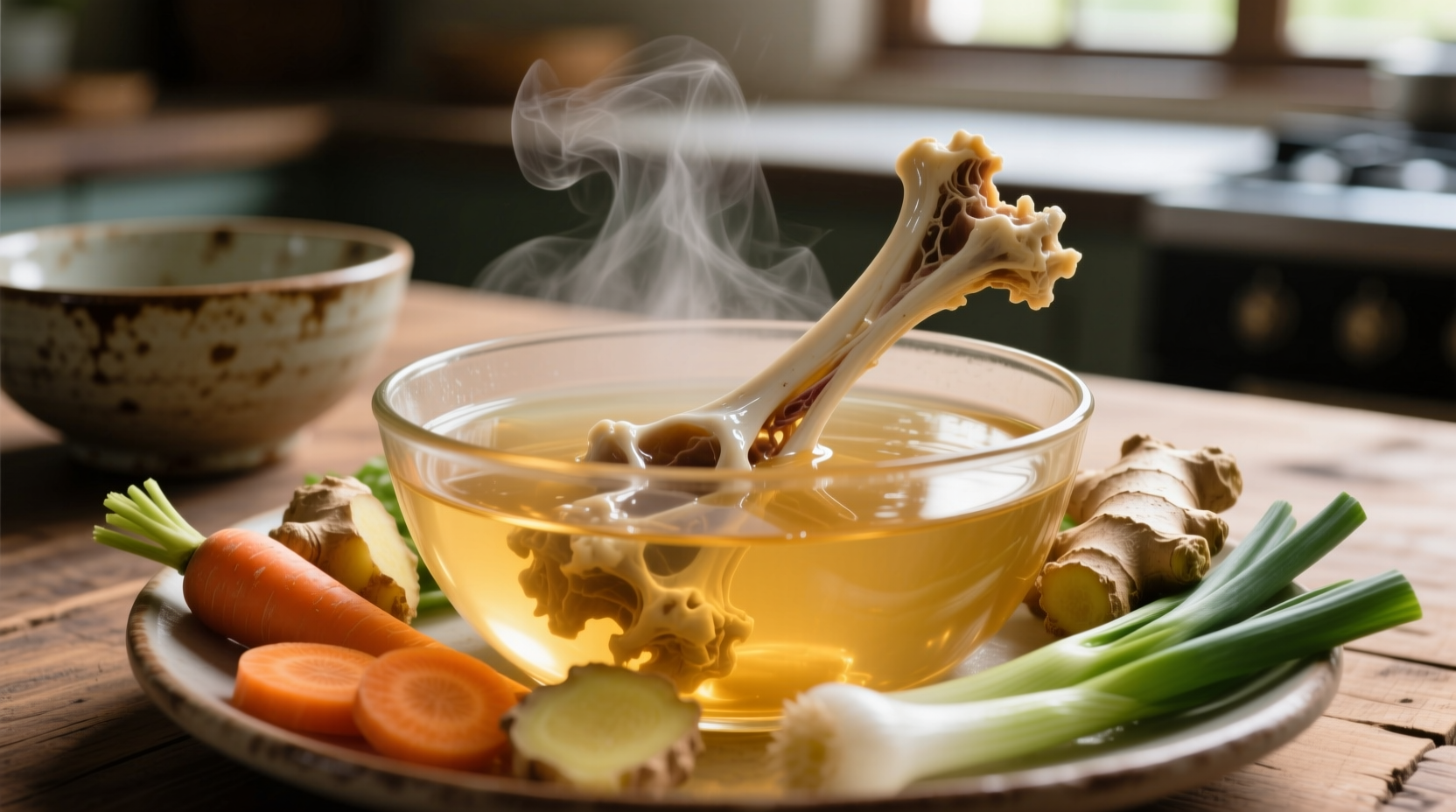Cooking neck bones on the stove delivers rich, collagen-packed broth and tender meat perfect for soups, stews, and traditional dishes. Unlike oven or slow cooker methods, stovetop cooking gives you precise control over temperature and clarity of broth—critical for professional-quality results. In this guide, you'll learn the exact timing, temperature control, and preparation techniques that transform inexpensive neck bones into a restaurant-worthy dish.
Whether you're making classic soul food, Asian broths, or hearty European stews, proper stovetop technique ensures maximum flavor extraction while maintaining food safety standards. We'll cover everything from selecting quality bones to troubleshooting common issues like cloudy broth or tough meat.
Why Stovetop Cooking Works Best for Neck Bones
Neck bones (from pork or beef) contain abundant connective tissue that requires controlled, moist heat to break down properly. The stove provides immediate temperature adjustments impossible with other methods. According to the Culinary Institute of America's Professional Chef textbook, "gentle simmering between 180-200°F (82-93°C) optimally extracts collagen without causing proteins to tighten and cloud the broth."
Essential Equipment Checklist
- Heavy-bottomed stockpot (8-12 quarts) – prevents scorching
- Slotted spoon or skimmer – for removing impurities
- Cheesecloth-lined strainer – for crystal-clear broth
- Instant-read thermometer – ensures food safety compliance
- Tongs – for handling bones safely
Selecting Quality Neck Bones
Choose neck bones with:
- Fresh pink color (not gray or brown)
- Minimal odor (only faint meaty scent)
- Good marbling and connective tissue visible
- Approximately 2-3 inches in length for even cooking
Butchers often have these refrigerated rather than frozen, as freezing can damage delicate collagen structure. For traditional soul food preparations, pork neck bones work best; beef neck bones excel in French and Korean broths.
Step-by-Step Stovetop Cooking Process
Phase 1: Preparation (5 minutes)
Rinse neck bones under cold water, then place in stockpot. Cover with 2 inches of cold water—never hot water, which sets impurities. Add 1 tablespoon vinegar to help draw out blood residues. This critical step prevents cloudy broth later.
Phase 2: Blanching (10 minutes)
Bring to rapid boil over high heat. As soon as foam appears (about 3-5 minutes), reduce to medium and continue boiling 5 more minutes. Skim off all grayish foam with slotted spoon. Drain bones and rinse under cold water. Discard blanching water—it contains impurities.
| Blanching Stage | Appearance | Action Required |
|---|---|---|
| Initial boil (0-3 min) | Small white bubbles | None |
| Early foam (3-5 min) | Grayish bubbles rising | Begin skimming |
| Full foam (5-7 min) | Thick gray layer | Aggressive skimming |
| Cleared stage (7-10 min) | Water appears clear | Complete blanching |
Phase 3: Simmering (1.5-2 hours)
Return clean bones to pot. Cover with fresh cold water (2 inches above bones). Add aromatics: 1 onion (quartered), 2 celery stalks, 2 carrots, 3 garlic cloves, and 1 bay leaf. Bring to gentle simmer over medium heat, then immediately reduce to low (180-200°F/82-93°C).
Skim any additional foam during first 30 minutes. Maintain barely visible bubbles at surface—vigorous boiling makes broth cloudy and toughens meat. USDA Food Safety guidelines require maintaining internal temperature above 140°F (60°C) throughout cooking to prevent bacterial growth.

Phase 4: Finishing (15 minutes)
After 1.5 hours, check tenderness. Meat should pull easily from bone. Remove bones and strain broth through cheesecloth-lined strainer. Discard solids or reserve meat for other dishes. Season broth with salt only at end—adding salt earlier draws out moisture and toughens meat.
Troubleshooting Common Issues
Cloudy Broth
Cause: Boiling too vigorously or skipping blanching
Solution: Strain through multiple layers of cheesecloth. For future batches, ensure proper blanching and maintain true simmer (180-200°F).
Tough Meat
Cause: Insufficient cooking time or temperature too low
Solution: Continue simmering in 15-minute increments until tender. Never boil—high heat makes meat stringy.
Bland Flavor
Cause: Underseasoned or insufficient aromatics
Solution: Add 1 teaspoon apple cider vinegar or soy sauce to brighten flavors. Roast aromatics first for deeper flavor profile.
Food Safety Guidelines
Proper handling prevents foodborne illness:
- Neck bones must reach internal temperature of 160°F (71°C) for pork, 145°F (63°C) for beef (USDA Food Safety and Inspection Service)
- Cool broth within 2 hours of cooking—divide into shallow containers
- Refrigerate for up to 4 days or freeze for 3 months
- Reheat to 165°F (74°C) before serving
Serving Suggestions
Neck bones shine in:
- Soul food classic: Serve with collard greens and cornbread
- Asian variation: Add ginger and star anise for pho-style broth
- European style: Incorporate into beef bourguignon
- Weeknight meal: Shred meat for tacos or sandwiches
Advanced Technique: Double-Simmer Method
For exceptional clarity and flavor, try this professional technique:
- Simmer blanched bones for 45 minutes at 180°F
- Cool broth completely, then refrigerate overnight
- Remove solidified fat layer from surface
- Return broth to heat with fresh aromatics for additional 45 minutes
This method, recommended by the American Culinary Federation, produces crystal-clear broth with layered flavors impossible through single simmering.











 浙公网安备
33010002000092号
浙公网安备
33010002000092号 浙B2-20120091-4
浙B2-20120091-4